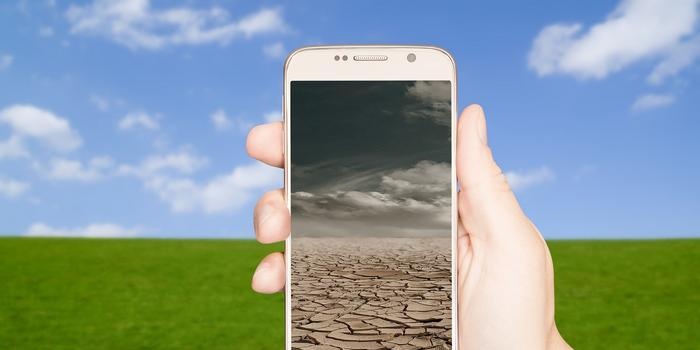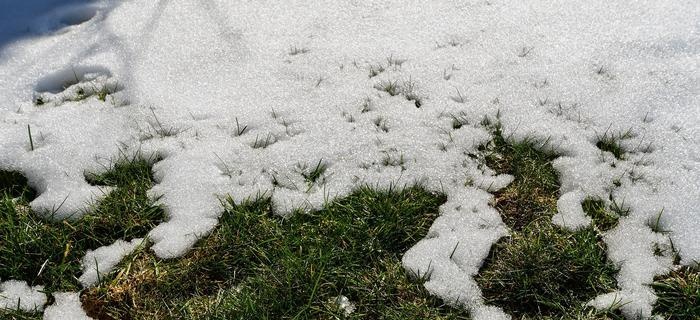Climate and man |
|
Such changes may seem insignificant. But they are of great practical importance, in particular in the Arctic. Moreover, here they were several times larger than the average in the entire hemisphere. And during the greatest warming, for example, the area of the polar sea ice shrank by 10 percent, significantly improving the conditions for polar navigation.
The atmosphere is in some respects analogous to heat engines, which are powered by temperature differences. With cold snaps, the intensity of movement of air masses, especially in the zone of temperate latitudes, increases. The transfer of water vapor from the oceans to the continents and, accordingly, the amount of precipitation is increasing. On the other hand, warming increases the frequency of droughts in many regions of Europe, Asia and North America. The reasons for these changes are studied by the science of climatology. It turned out, for example, that the transparency of the atmosphere for solar radiation heating the earth's surface is not constant. It is significantly influenced by changes in the mass of the smallest liquid and solid particles in the air - atmospheric aerosol. These particles linger especially for a long time in the lower stratosphere, at altitudes from 15 to 25 kilometers, where they consist mainly of small droplets of sulfuric acid.
There is reason to believe that in recent decades, the climate began to change as a result of human economic activity. There are three known ways of human influence on the climate. The first is heat from the energy used, including coal, oil and nuclear. True, this heating is still small and on average for the planet is about 0.01 degrees. However, in large cities it can reach several degrees. The second way is to increase the concentration of carbon dioxide as a result of burning various types of fuel. Carbon dioxide significantly affects the greenhouse effect in the atmosphere: it transmits solar radiation to the ground well, but noticeably delays long-wave thermal radiation leaving the earth's surface. An increase in the amount of carbon dioxide leads to an increase in air temperature near the earth's surface. Once upon a time, a very long time ago, the concentration of carbon dioxide in the atmosphere was much higher than today (now it contains about 0.03 percent) and reached several tenths of a percent.Then the productivity of plants was also higher, more organic matter was created in the process of photosynthesis. The air temperature was also noticeably higher, especially in high latitudes. The amount of carbon dioxide in the atmosphere began to decrease tens of millions of years ago, but this process has accelerated in the last few million years. Accordingly, it was getting colder. The result is the formation of permanent ice sheets at the poles.
Since the late thirties and until recently, the transparency of the atmosphere for solar thermal radiation has decreased due to an increase in atmospheric aerosol. These are the results of volcanic activity and human economic activity - air pollution with solid and liquid particles not only in cities, but also in vast areas. What will the future climate be like? Many scientists are trying to give their hypotheses. In the sixties of the last century, more than twenty forecasts of climate change were proposed, and the authors, as a rule, believed that the cooling that had occurred earlier would continue further. It has been suggested that this cooling may relatively soon lead to the "Little Ice Age", that is, to a sharp deterioration of climatic conditions in countries of temperate and high latitudes, where agriculture is especially sensitive to a drop in temperature. However, the available data suggested that the cooling process has already ended and should be replaced by warming, which will lead to an increase in the frequency of droughts in many areas of the temperate latitudes of the northern hemisphere. They also showed that after a period of lowering the average temperature to a minimum in the mid-sixties of the XX century, its growth began, accelerating in the late sixties - early seventies. Over the past ten years, it has increased by 0.3 degrees, and in the high latitudes of our hemisphere - by approximately one degree.
The rate of increase in the mass of carbon dioxide is growing all the time, and therefore its influence on the climate becomes more and more significant. Until the mid-sixties, its effect was offset by an increase in atmospheric aerosol. But this increase has stopped, and rapid warming has begun. And it is already becoming more and more noticeable. What climatic changes await us? As the mass of carbon dioxide increases at an ever-faster rate, further warming is most likely. In a few decades, it can lead to an increase in the melting of polar sea ice, which will significantly change the natural conditions not only in high latitudes, but also in most of the planet. The ongoing process of restoration of the ancient composition of the atmosphere can be regarded as a "rejuvenation" of the biosphere. We are talking about the restoration of natural conditions with a warm climate at all latitudes, about an increase in plant productivity, which can support a much larger mass of living organisms. If this process were slow, it could be considered beneficial for humanity. But its speed creates a number of problems that can be difficult to solve.However, there is reason to hope that over time, climate regulation issues will be better studied, it will become more subservient to us. M. Budyko |
| Have you lost your instinct? | Dmitry Iosifovich Ivanovsky |
|---|
New recipes
 Is the Earth's climate changing? This question has long been of concern not only to scientists. As shown by meteorological observations, since the end of the nineteenth century, the average air temperature at all latitudes of the northern hemisphere has increased. Warming peaked in the late thirties of the twentieth century, when the average air temperature was 0.6 degrees higher than in the late nineteenth. Then a cold snap began. By the middle of the sixties of the XX century, the air temperature dropped by about 0.3-0.4 degrees.
Is the Earth's climate changing? This question has long been of concern not only to scientists. As shown by meteorological observations, since the end of the nineteenth century, the average air temperature at all latitudes of the northern hemisphere has increased. Warming peaked in the late thirties of the twentieth century, when the average air temperature was 0.6 degrees higher than in the late nineteenth. Then a cold snap began. By the middle of the sixties of the XX century, the air temperature dropped by about 0.3-0.4 degrees. Air temperature fluctuations had an even greater influence on the moisture turnover in the atmosphere and on the amount of precipitation. The temperature at high latitudes changed more than at low latitudes, and with warming, its difference at the equator and at the pole decreases, and when the temperature falls, it increases.
Air temperature fluctuations had an even greater influence on the moisture turnover in the atmosphere and on the amount of precipitation. The temperature at high latitudes changed more than at low latitudes, and with warming, its difference at the equator and at the pole decreases, and when the temperature falls, it increases. Drops arise in the atmosphere itself from sulfur dioxide, which is released during various processes on the earth's surface. In the stratosphere, it interacts with ozone and water vapor located there, turning into sulfuric acid. Since one of the most important sources of sulfur dioxide is volcanic eruptions, during periods of high volcanic activity, the transparency of the atmosphere drops and cooling sets in. In the twenties and thirties of our century, there were no major volcanic eruptions, which led to a noticeable increase in the transparency of the atmosphere and to a warming of the climate.
Drops arise in the atmosphere itself from sulfur dioxide, which is released during various processes on the earth's surface. In the stratosphere, it interacts with ozone and water vapor located there, turning into sulfuric acid. Since one of the most important sources of sulfur dioxide is volcanic eruptions, during periods of high volcanic activity, the transparency of the atmosphere drops and cooling sets in. In the twenties and thirties of our century, there were no major volcanic eruptions, which led to a noticeable increase in the transparency of the atmosphere and to a warming of the climate. Under the influence of human economic activity, the ancient composition of the atmosphere, richer in carbon dioxide, is being restored with great speed. In the last ten years, its number has increased by several percent of its total mass. By the end of this century, it should have increased by 15-20 percent over 1970. Calculations show that an increase in the concentration of carbon dioxide in recent decades should have raised the average air temperature by several tenths of a degree. But during this time it did not rise, but fell. Obviously, other factors significantly influenced the climate. What kind?
Under the influence of human economic activity, the ancient composition of the atmosphere, richer in carbon dioxide, is being restored with great speed. In the last ten years, its number has increased by several percent of its total mass. By the end of this century, it should have increased by 15-20 percent over 1970. Calculations show that an increase in the concentration of carbon dioxide in recent decades should have raised the average air temperature by several tenths of a degree. But during this time it did not rise, but fell. Obviously, other factors significantly influenced the climate. What kind? Such a rapid warming was observed in the last century only once - in the early twenties, respectively, with an increase in the transparency of the atmosphere. With the current warming, the transparency of the atmosphere remains below normal. Therefore, the main reason for it was the increase in the concentration of carbon dioxide.
Such a rapid warming was observed in the last century only once - in the early twenties, respectively, with an increase in the transparency of the atmosphere. With the current warming, the transparency of the atmosphere remains below normal. Therefore, the main reason for it was the increase in the concentration of carbon dioxide.









